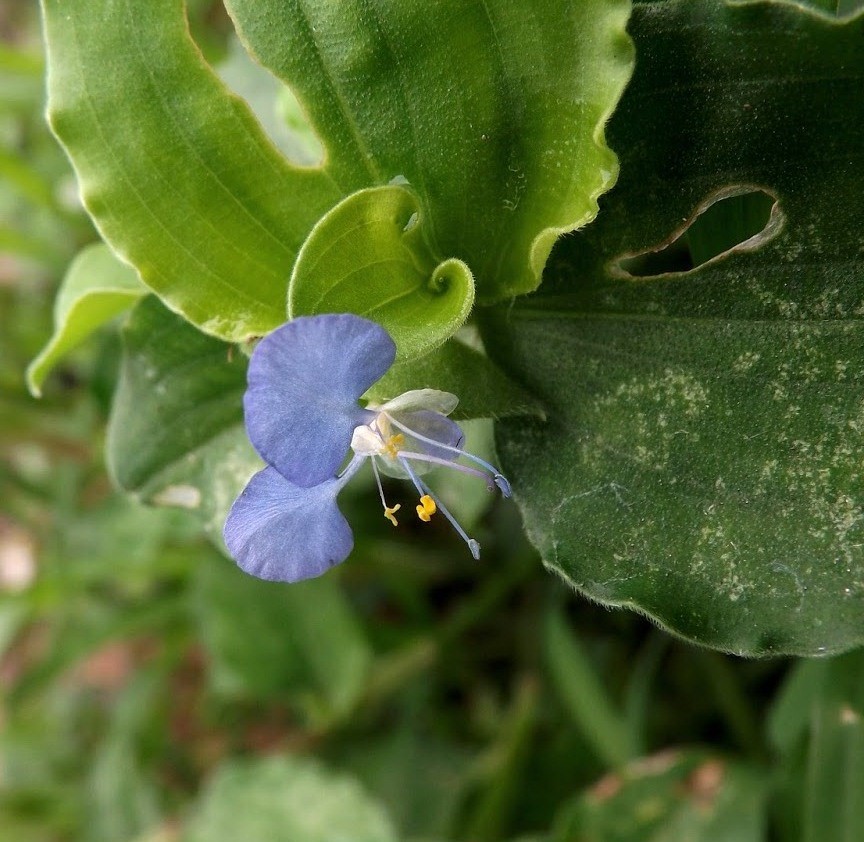Benghal dayflower
(Commelina africana africana)

Description
Commelina benghalensis, commonly known as the Benghal dayflower, tropical spiderwort, or wandering Jew, kanshira in Bengali, is a perennial herb native to tropical Asia and Africa. It has been widely introduced to areas outside its native range, including to the neotropics, Hawaii, the West Indies and to both coasts of North America. It has a long flowering period, from spring to fall in subtropical areas, and throughout the year closer to the equator. It is often associated with disturbed soils. In both it native range and areas where it has been introduced it is usually considered a weed, sometimes a serious one. In the United States it has been placed on the Federal Noxious Weed List. It is considered a moderate weed of rice cultivation in Asia. In its native range of sub-Saharan Africa, India, Sri Lanka, and much of Southeast Asia, it is considered a serious weed of an enormous range of crops from tea and coffee to cassava and peanuts. Additional agricultural damage is caused by the fact that it can host the nematode Meloidogyne incognita and the Groundnut rosette virus. In China it is used as a medicinal herb that is said to have diuretic, febrifugal and anti-inflammatory effects, while in Pakistan it is used to cure swellings of the skin, leprosy and as a laxative. Commelina benghalensis is a wide-ranging plant, being native to tropical and subtropical Asia and Africa, an area otherwise known as the paleotropics. In China it is commonly associated with wet locations. There it can be found from near sea level up to 2300 metres. It is present from the provinces of Hebei and Shandong in the northeast, west to Sichuan and in all provinces south to Hainan, the southernmost province. It is also found in Taiwan. In Japan the plant is restricted to the southern portions of the country from the southern Kantō region westward and including the islands of Shikoku and Kyūshū. Although its roots and tubers are used as a food source, C. benghalensis is not cultivated in Ethiopia, where it grows as a weed.
Taxonomic tree:







